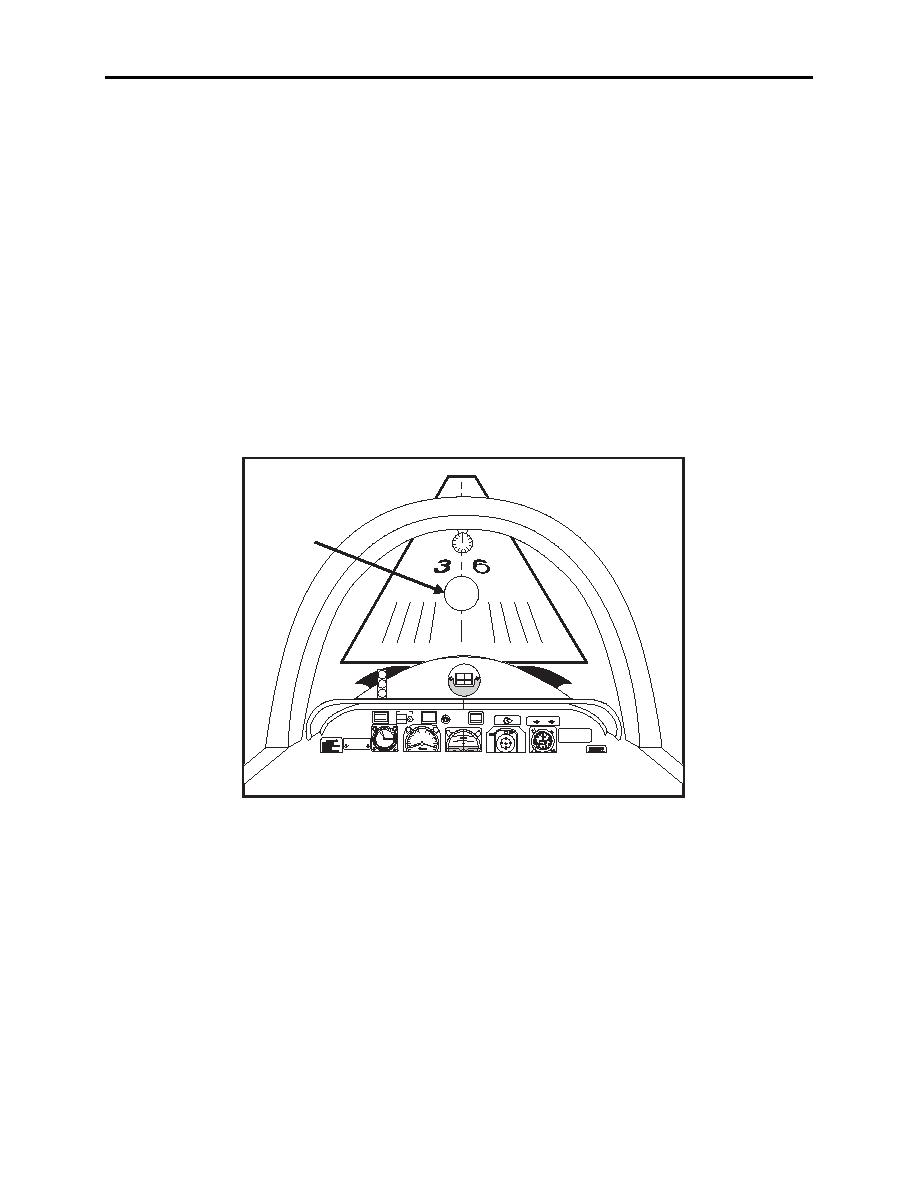 |
|||
|
|
|||
|
Page Title:
Figure 7-8. Intended Point of Landing |
|
||
| ||||||||||
|
|  CHAPTER SEVEN
T-34C CONTACT
Mentally superimpose our symbolic aircraft on the glideslope and you should see that
by maintaining airspeed (meticulously) and a constant sight picture of the touchdown
zone, you will maintain a constant rate of descent to land in a predictable area of the
runway.
If your airspeed is "locked on" and the intended point of landing appears to be
running away from you, your aircraft is falling below the desired glideslope. Add
power, raise the nose to maintain airspeed and fly back up to the glideslope.
Anticipate a slight power reduction when back on glideslope and lower the nose to
the approach attitude to reestablish the rate of descent.
Conversely, if the intended point of landing disappears beneath the nose and airspeed
is "locked on," you have flown above the glideslope and need to reduce power. Lower
the nose, thereby increasing the rate of descent while maintaining airspeed. Anticipate
a slight power addition once reestablished on glideslope and readjust the nose attitude
to "set" the desired rate of descent (Figure 7-8).
Intended Point
of Landing
X
3
N
6
INBOARD
GEARDOOR
MASTER
TERE
SYS
WHEELS
LHOPEN
FIRE
ANT
CAUTION
RADIO
VHF
REC
VOR
ACAN
RHOPEN
UHF
VHF
OFF
ON
TEST
O
CAUTION
K
F
400 4060
F
FUELFLOWINDICATIONAND
20
STANDBYCOMPASSERRATIC
350
80
WHENIGNITIONOPERATING
KNOTS
BUNO
0
300
100
160265
10
250
150
Figure 7-8 Intended Point of Landing
Balanced flight must be maintained throughout the approach. An unbalanced flight
condition increases the stalling speed, gives an erroneous impression of the flight path
of the aircraft, and may cause difficulty during the subsequent landing transition,
touchdown, and/or landing rollout. Fly the aircraft smoothly; avoid sudden or erratic
control movements. Remember, good basic airwork and proper trim are mandatory in
the approach. The proper amount of rudder and up elevator trim will enable the
aircraft to "fly itself" with very little control pressure. The key to a good landing is a
good approach.
7-12 LANDING PROCEDURES
|
|
Privacy Statement - Press Release - Copyright Information. - Contact Us |